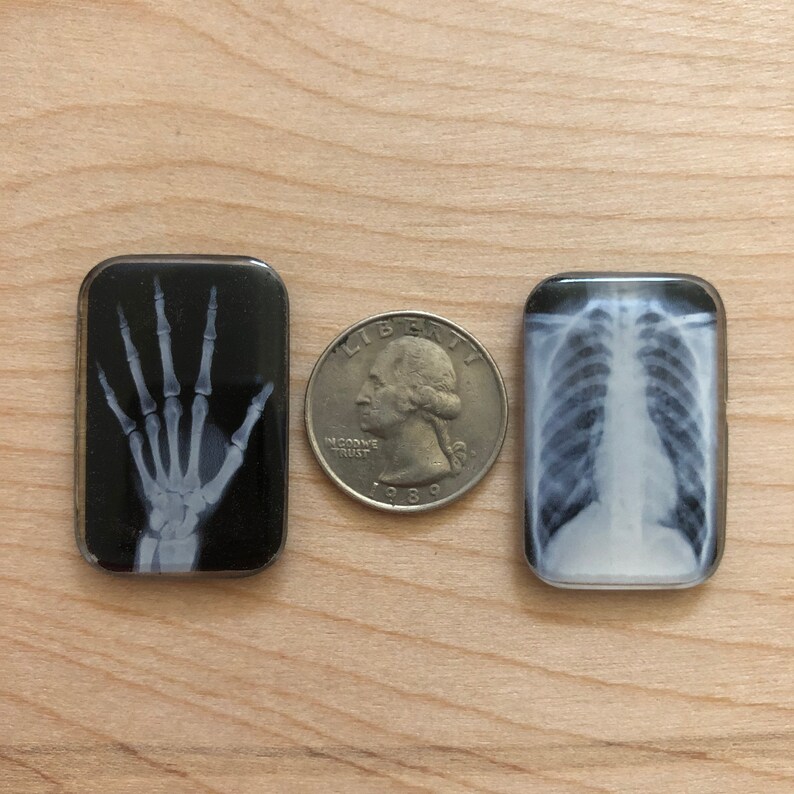
The spectrum is then built up by dividing the energy spectrum into discrete bins and counting the number of pulses registered within each energy bin. Detector speed is obviously critical, as all charge carriers measured have to come from the same photon to measure the photon energy correctly (peak length discrimination is used to eliminate events that seem to have been produced by two X-ray photons arriving almost simultaneously). The charge is then collected and the process repeats itself for the next photon. They all share the same detection principle: An incoming X-ray photon ionizes a large number of detector atoms with the amount of charge produced being proportional to the energy of the incoming photon. Proportional counters or various types of solid-state detectors ( PIN diode, Si(Li), Ge(Li), Silicon Drift Detector SDD) are used. In energy-dispersive analysis, dispersion and detection are a single operation, as already mentioned above.
XRAY MARKER PORTABLE
Where d is the spacing of atomic layers parallel to the crystal surface.Ī portable XRF analyzer using a silicon drift detector

The wavelength of this fluorescent radiation can be calculated from Planck's Law:

Each of these transitions yields a fluorescent photon with a characteristic energy equal to the difference in energy of the initial and final orbital. The main transitions are given names: an L→K transition is traditionally called K α, an M→K transition is called K β, an M→L transition is called L α, and so on. There are a limited number of ways in which this can happen, as shown in Figure 1. Following removal of an inner electron by an energetic photon provided by a primary radiation source, an electron from an outer shell drops into its place. The term fluorescence is applied to phenomena in which the absorption of radiation of a specific energy results in the re-emission of radiation of a different energy (generally lower).įigure 3: Spectrum of a rhodium target tube operated at 60 kV, showing continuous spectrum and K lines Characteristic radiation Įach element has electronic orbitals of characteristic energy. Thus, the material emits radiation, which has energy characteristic of the atoms present. In falling, energy is released in the form of a photon, the energy of which is equal to the energy difference of the two orbitals involved. The removal of an electron in this way makes the electronic structure of the atom unstable, and electrons in higher orbitals "fall" into the lower orbital to fill the hole left behind. X-rays and gamma rays can be energetic enough to expel tightly held electrons from the inner orbitals of the atom. Ionization consists of the ejection of one or more electrons from the atom, and may occur if the atom is exposed to radiation with an energy greater than its ionization energy. When materials are exposed to short- wavelength X-rays or to gamma rays, ionization of their component atoms may take place. Letters for right & left sides are 5/8″, while initial letters & numbers are 1/4″.Figure 1: Physics of X-ray fluorescence in a schematic representation. Markers are approximately 1 inch (length) X 1 inch (width) x. Once you have added the marker(s) you would like to order to your cart, continue to shop or check out using Paypal or Credit Card.


YOUR INITIALS (same initials used for both) *All Markers are made in the AP orientation unless you put in the comments section that you want them Pronated. *CLEAR Front & CLEAR Back do not have a casing. **Pick your image for the front face of your marker (Circle front= CF#) and go down to the thumbnail images below to visualize the images for the back face (CB#) that you would like.** Square front SQF5 (Royal Blue Glitter) & backing is square back SQB76 (Blue Skull). Our square xray markers are fully customizable! When you find your favorite color(s) and casing, remember the front and back numbers and start your order! MIX & MATCH – CIRCLE, SQUARE or CLASSIC marker sets Quantity


 0 kommentar(er)
0 kommentar(er)
